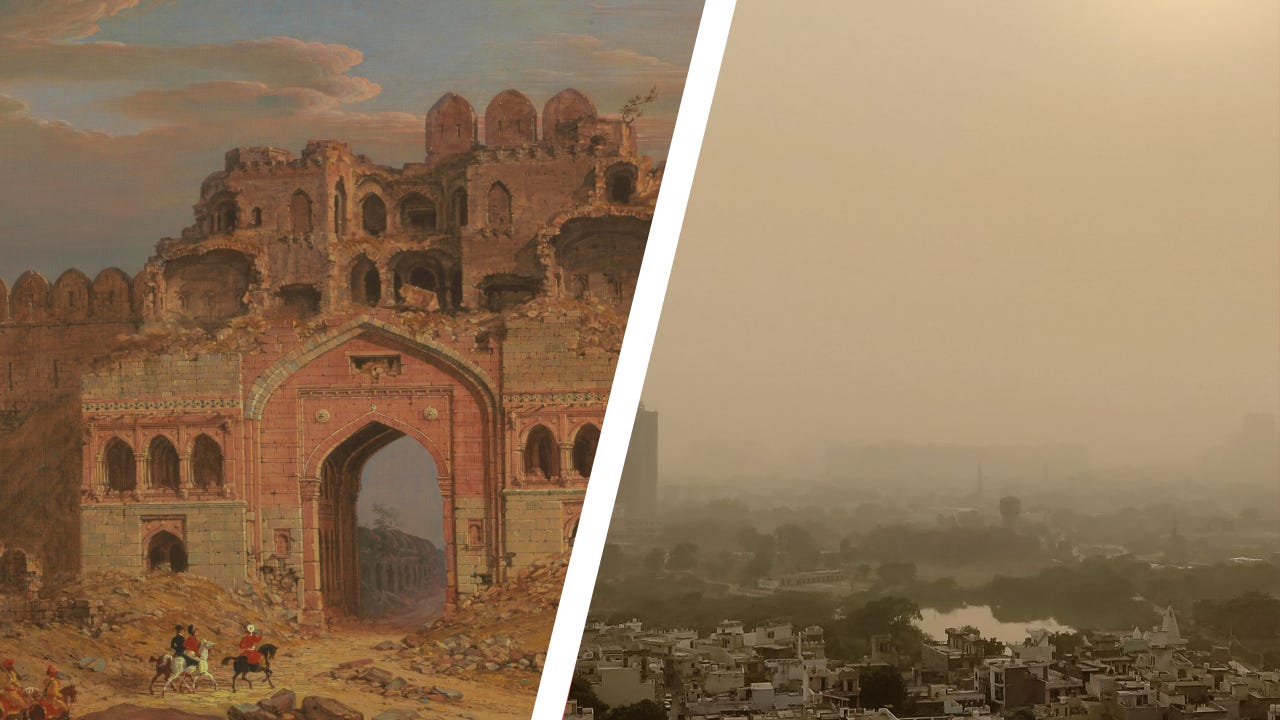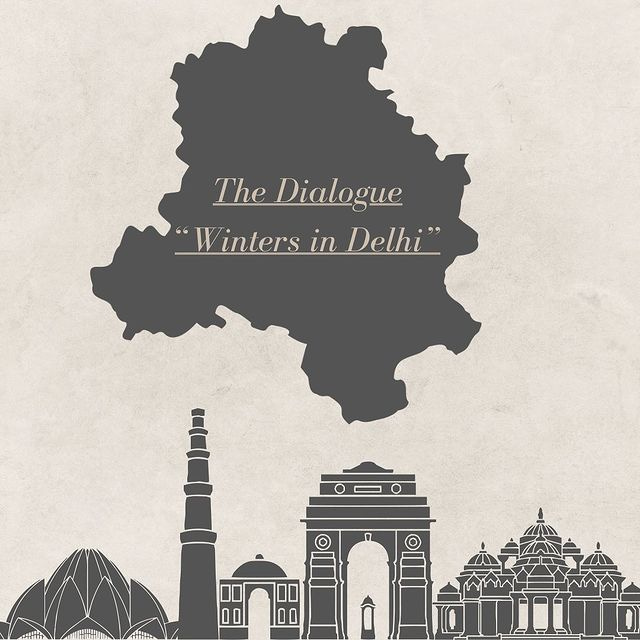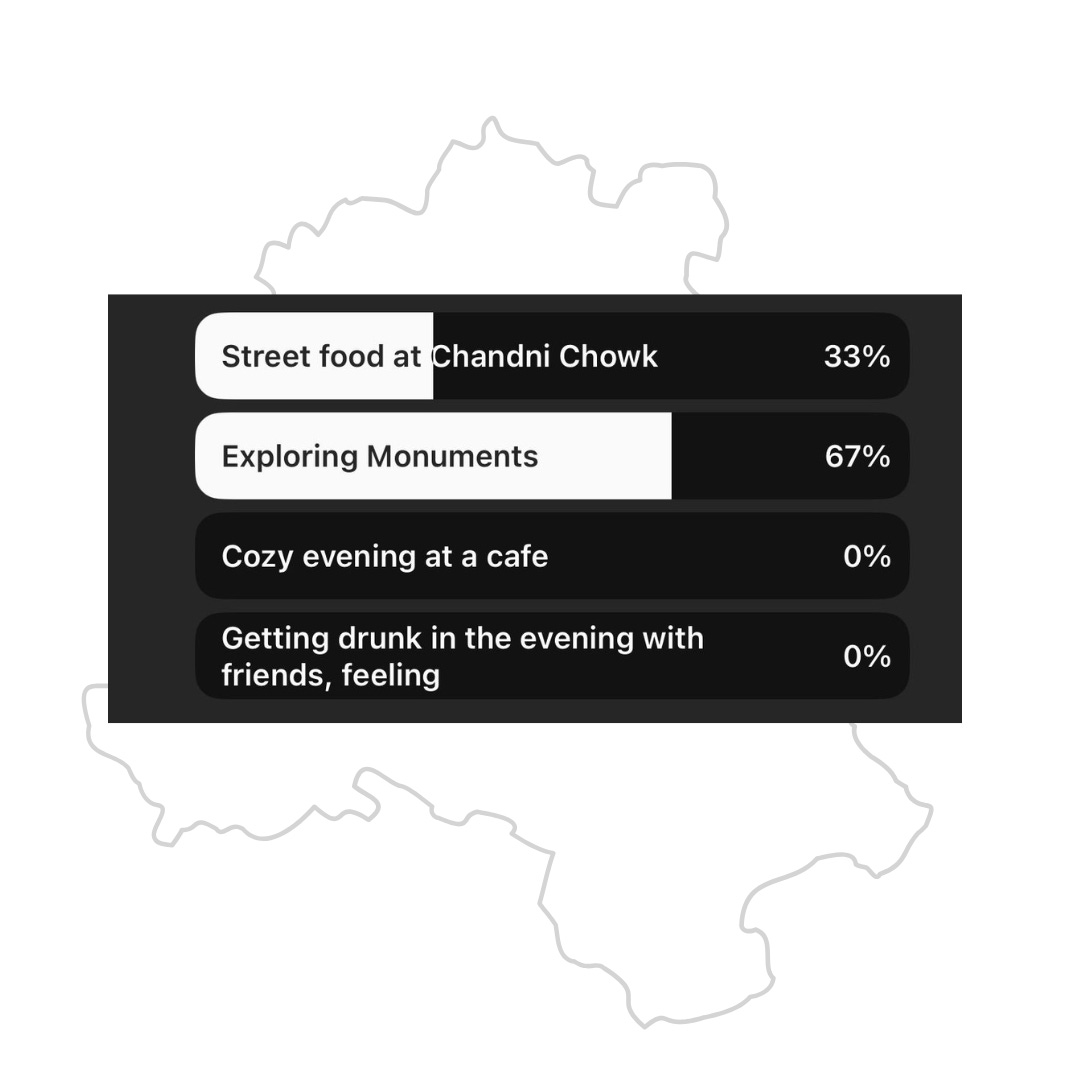Dialogue #2 Winters in Delhi: Ruins and Resilience
I am back in my beloved city. The scene of desolation fills my eyes with tears. At every step my distress and agitation increases. ― Khushwant Singh, Delhi
It’s winter in Delhi. Pollution hangs in the air, and the sun seems to have abandoned the city. The days feel heavy, as though the city is grieving something it has lost—its charm, perhaps.
I think about Mir, the great poet of the eighteenth century, Mir Taqi Mir, who watched his beloved Delhi fall apart around him. He must have felt the weight of the city’s sorrow, much like this, when he decided to leave for Lucknow.
When Mir arrived in Lucknow, the city welcomed him in its own way. That evening, there was a Mushaira. A candle was placed before him. Mir performed one of his most celebrated verses there.
Kya bood-o-baash poochho ho, poorab ke saakino ?
Hum ko ghareeb jaan ke, hans hans pukaar ke
Dilli jo ek sheher tha, aalam mein intekhaab
Rehte thay muntakhab hi jahaan rozgaar ke
Us ko falak ne loot ke veeraan kar diya
Hum rehne waale hain usi ujde dayaar ke
What whereabouts do you ask of me, O people of the East ?
Considering me an alien and laughing at me
Delhi, that was a city unique on the globe
Where lived only the chosen of the time
Destiny has looted it and made it deserted
I belong to that very wrecked city(The quoted verse is taken from Saif Mahmood's article, "Mir Taqi Mir: The Romancer of Delhi," published on SabrangIndia. Read the full article here: https://sabrangindia.in/column/mir-taqi-mir-romancer-delhi.)
I see myself looking at Delhi the way Mir once did—through a lens of loss and longing. The city has lost its charm, veiled by a thick layer of polluted air that stings my eyes if I don’t wear sunglasses. I hate wearing a mask; it feels more suffocating than the 450 AQI around me.
This weekend, I went to Chandni Chowk with a new setup: a gimbal and my phone camera. If you follow our Instagram page, you’ll catch glimpses of it. I parked my car near Jama Masjid, and as I stepped out and walked toward it, the sight of the mosque’s steps stopped me in my tracks.
I thought of the Dastangos, the storytellers, who once wove long, intricate tales on these very steps.
As I walked, my eyes were drawn to the rooftops. Some looked as they always had, while others had transformed into cafes. I thought of Mir again—when he first arrived in Delhi, a Mushaira had been arranged on a mansion’s rooftop, not here, but somewhere close, in Daryaganj.
My gaze returned to the new cafes nestled amidst the historic alleys. They seemed to blend the old with the new, creating a strange kind of harmony. It made me wonder: what will be the future of Delhi?
The Dialogue
We asked the Bohemian Dialogue community to share their thoughts on winters in Delhi. What moments or memories does this season brings to them?
Voices from the Community
@monachopsis_____: It's like I went back to my old toxic boyfriend. It's cozy, ironically warm, but I'll he'll probably take my life in near future with his toxicity!
Just like Delhi was to Mir—a lover of the city and a witness to his heartbreak—these winters have that same pull: cozy and familiar yet undeniably harsh.
Reflections and Further Reading
For this week’s exploration of Delhi’s winters, we drew inspiration from Khushwant Singh’s Delhi. If you’re eager to delve further into the city’s rich history and culture, we recommend:
The City of Djinns by William Dalrymple
Delhi by Khushwant Singh
Each offers a vivid journey through the heart of this complex, ever-evolving city.




